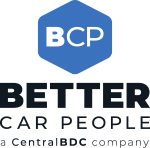Business development is a vague concept that has taken on many nuances. When looking to this term at its base form, it means your business is developing--growing--expanding. Is your dealership BDC living up to that definition?
Business development is key for any kind of business to thrive in the long run. The LA Lakers don’t win without a game plan, so why would dealerships “win” against each other without a business development framework? There are two main areas that a business development plan needs to address: handling your leads and working with demand.
Handling Your Leads
When it comes to generating leads, you’ll want to think about inbound and outbound leads. The two types of leads are different, and the customers on each end are different as well. It’s only fair that you approach each kind of lead differently.
As you start preparing for these leads, don’t forget that the first bad contact you send that doesn’t have value will be the last one that your customers are going to look at.
Inbound Leads
Inbound leads require you to attract, engage, and convert customers. These people have an interest in you already, and your dealership wants to take that interest and turn it into a sale. Inbound leads come in from several different avenues, including phone calls, third-party leads, and internet leads. These leads are more than likely hand raisers, so you’ll want to make sure that they’re ready to be your customer.
These leads are attracted to you because of the reputation your dealership has. Whether it’s through word of mouth, the most powerful marketing tool, or the content that your team has created online via social media or blogs, these leads already know a little bit about you. Remember that when creating a plan for these customers.
Outbound Leads
Outbound leads work differently than inbound leads - these leads require you to identify, target, and initiate conversations with prospects. These potential customers probably don’t know who you are, and they probably haven’t heard of your dealership. You can find these people through your CRM leads, manifest lists, or cold calls.
Outbound leads make you and your team think from the customer’s perspective; what does your dealership offer that other dealerships don’t? If you don’t have anything that other dealerships don’t have, you can show stellar customer service that blows them away. Little things, like an uncommon greeting, will stick with your prospects. Show them why they should buy from you when you create a plan for handling outbound leads.
Managing Leads
Managing both kind of leads that your dealership deals with requires you to create a few different things. You’ll want to fine-tune your team’s phone skills with things like call guides, which will help you ensure the quality of responses. This includes creating things like templates, workflows, and automated (yet customizable and personalized) responses that will help your team stay consistent.
In this stage of the game, you’ll want to focus on engaging, creating appointments, and selling to your leads. This requires quality engagements and conversations that create a trustworthy bond between associates and leads. If your leads trust you, then by the time they come for their appointment, they’ll be willing to listen and buy from you.
Working With Demand
When it comes to demand, there are two things that you’ll want to focus on: creating demand and capturing demand. Demand works side by side with the customer’s journey, so you need to be aware of the process that your customer goes through before (and after) coming to you. Customers today are changing; your buyers are looking for trust and transparency from your dealership, and if you’re not delivering, then they’ll quickly look elsewhere.
Creating Demand
Creating demand is vital for the beginning stages of the customer journey. You can utilize different kinds of data to figure out where you can easily create demand, especially in areas that you don’t necessarily see all the time. Google has free data graphs that can help with this called Reggie Tools, which helps you figure out where you can best concentrate your efforts to create and capture demand.
Capturing Demand
Capturing demand focuses on the end of the customer’s journey. Here, you’ll be harnessing the demand that already exists within your dealership. An important part of this process is gaining trust with your potential customers. Adding transparency to your everyday processes helps you offer value to your customers that they’ll easily see.
Possible Challenges?
You’re used to dealing with challenges at your dealership. They’re just part of the retail experience, and sales trends are important to look at. The past years have seen an increase in new cars being sold, so it’s time for the natural downfall of new car sales. You want to make sure that your dealership is prepared for the future.
One key answer to easing your dealership through down times is having a BDC, and a BDC that runs well. Dealerships that scored highly on their BDC assessments stay growing in the low times while dealerships without BDCs fell drastically.
With the possible challenges that are inevitably coming, you need to figure out how your dealership will handle the changes coming. Your growth will soon be in the opportunities that you’re currently mismanaging.









